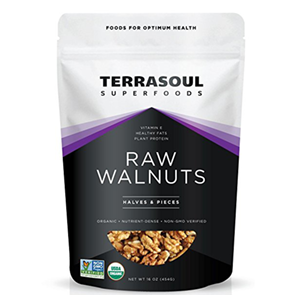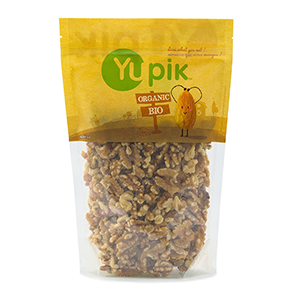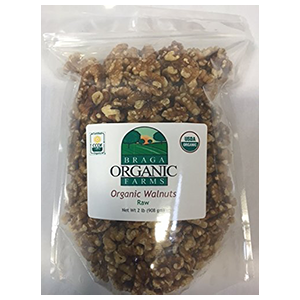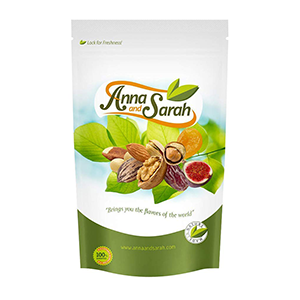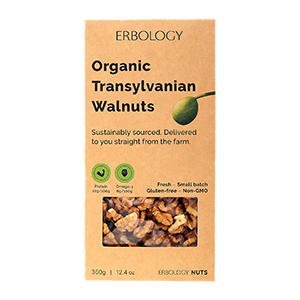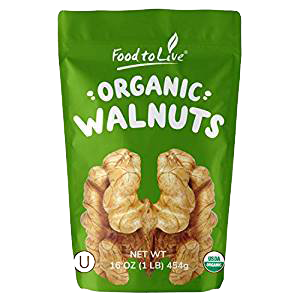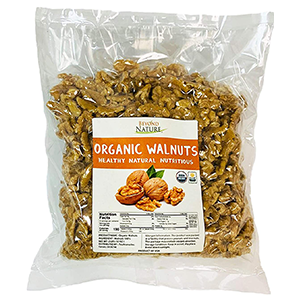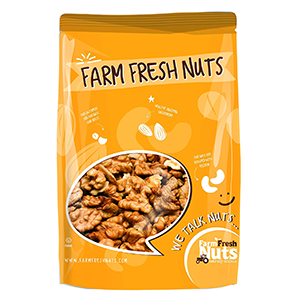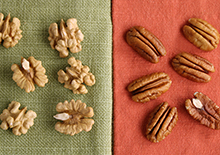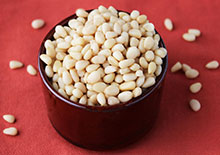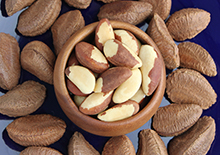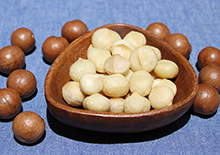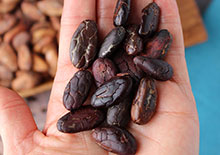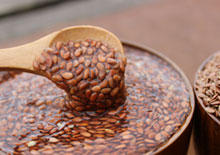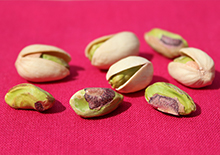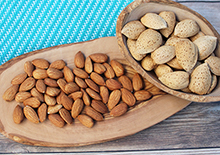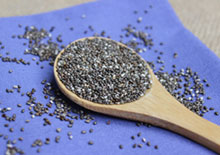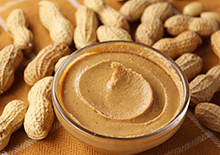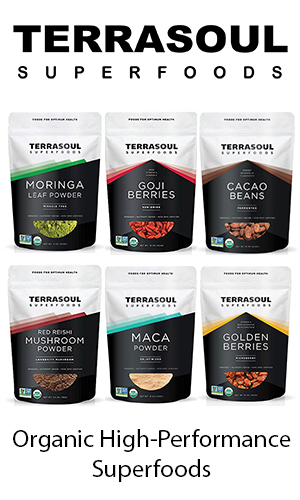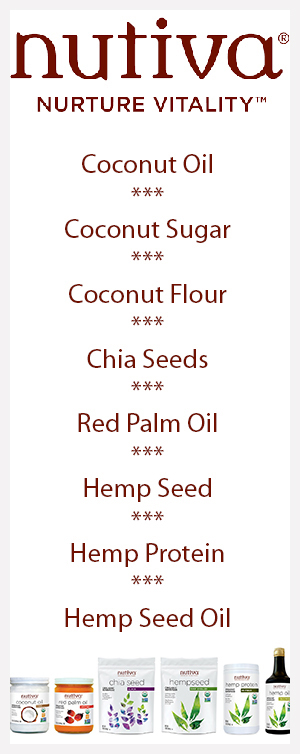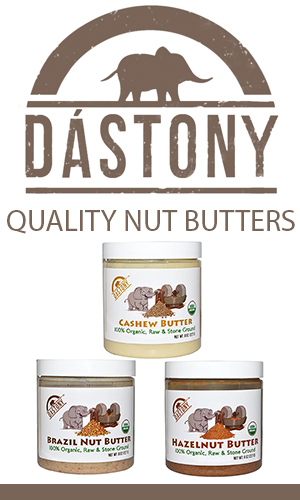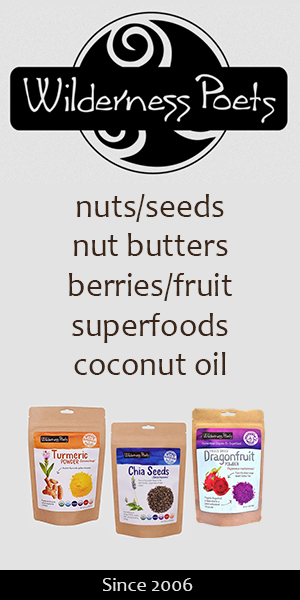- Home
- Nuts and Seeds
- Benefits of Walnuts
Benefits of Walnuts, Are They Really a "Brain Food"?
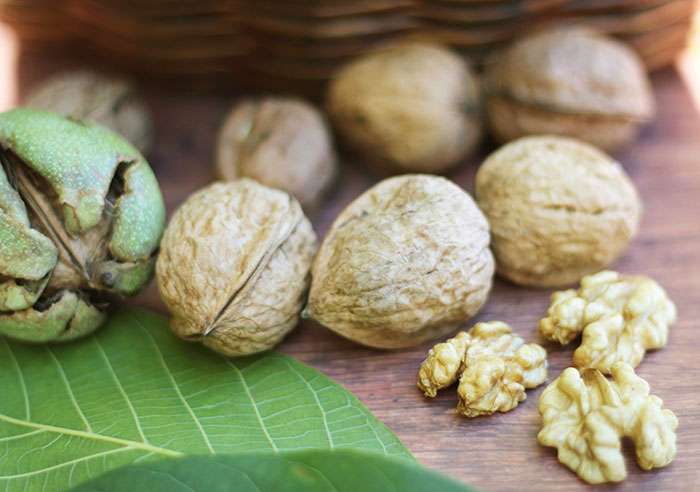
Walnuts, a type of tree nut, are most commonly domesticated as a food source from the English walnut or Juglans regia species. They also grow wild in many parts of the world typically where hot dry climates seasonally persist.
They are an ancient tree nut species that were interestingly not initially cultivated as an agricultural crop but were largely dispersed by humans along Silk Road trade routes to facilitate mobility rather than a sedentary lifestyle.
Juglans, which is often translated as "a nut fit for a god", is the Latin name derived from the words Jovis (the Roman god Jove or Jupiter) and glans (nut).
The Juglans regia species is believed to be native to Persia, although some sources claim a broader range with locations spanning from the Balkan Peninsula to Western China. Originally called the "Persian walnut", today they are known as the "English walnut" variety, a name that was adopted along early trade routes by English merchants.
In the U.S., English walnuts were introduced into the Mediterranean-like climates of Southern California in the 18th century by Spanish missionaries, along with other species like figs and olives. Orchard plantings for commercial production began near Santa Barbara, CA and later migrated north to the Central Valley locations of the state. California is today the leading producer for walnuts in the U.S.
About the Black Walnut Species
Another wild species known as black walnut (Juglans nigra) are native to Northeastern America and were some of the first wild nut bearing trees, along with the butternut and oak acorn, at the beginning of the Woodland period nearly 3,000 years ago.
The Juglans hindsii black walnut species, native to Northern California, were harvested by indigenous peoples of many tribal regions along with others like pine nut, buckeye, acorn, chestnut and hazelnut.
The black walnut tree was utilized not only for its nuts but the leaf, bark and the hulls were prepared for medicinal purposes. The green husks or "hulls" were used to make black dye and are still today a famed herbal remedy for parasitic infections due to their high juglone content.
While black walnuts have a delicious and nutritious edible nut, they are harder to hull and crack. Unlike the English species, they are not usually grown for commercial nut production for this reason.
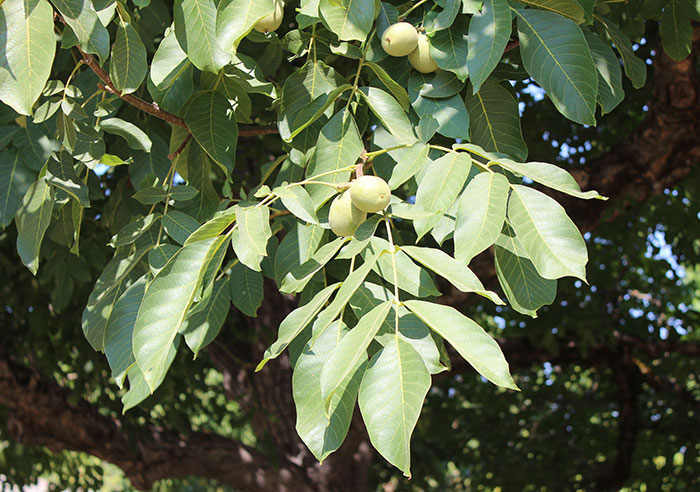
What are Walnuts?
Although botanically speaking the walnut is not technically a "nut" but rather a "seed", it is commonly classified as a type of tree nut because of its hard-walled shell with an edible kernel or "meat" that is divided into two sections or halves.
The shell is encased within a thick green husk which surrounds it until ripe. At this stage the husk dries and cracks to reveal the whole walnut shell which will eventually fall to the ground if not hand harvested.
Walnut trees are distinguished by their pinnate oblong aromatic leaves and during peak season the husks produce a similar perfume-like fragrance as they crack open.
Wild walnut trees are a hardy species and can grow to be quite large. We have personally witnessed wild trees growing here in California that are as large as 5-storey apartment buildings.
If you've ever experienced growing your own or foraged from a wild species, you are well aware of the plentiful amount food the smallest of trees can provide. Freshly harvested nuts straight from the shell, we’ve noticed, have a very rich sweet flavor and crunchier texture compared to most store-bought walnuts.
Out of the 21 species of the genus Juglans unique to different areas of the world, there are many cultivars and hybrids from the English walnut Juglans regia such as the popular gourmet "red walnut" variation.
A Long Living Tree
Walnut trees are also a long-living variety. One of the oldest trees
found in the Xin Jiang Province of China is believed to be over 1,000
years old. Likewise, some trees growing in the world’s largest natural
"walnut forest" in Kyrgyzstan or Jalal-Abad Province of Arslanbob are
dated to be over 500 years old.
According to the book Tending the Wild, large groves and single old wild trees can still be found growing near native American archaeological sites in California near regions of "Walnut Creek, Walnut Grove and the Napa range above Wooden Valley."
Benefits of Walnuts, Why They are Considered a "Brain Food"
The shelled raw walnut is often popularized as a brain-nourishing food source and in accordance with the Doctrine of Signatures does suggest a therapeutic correspondence. The shelled nuts do in fact look like a mini brain encased within a skull-like shell.
Some scientific research has likewise indicated the correlation between regular walnut intake and the delayed onset of age-related cognitive decline.
But what are some of the substances in walnuts that might have a brain boosting influence?
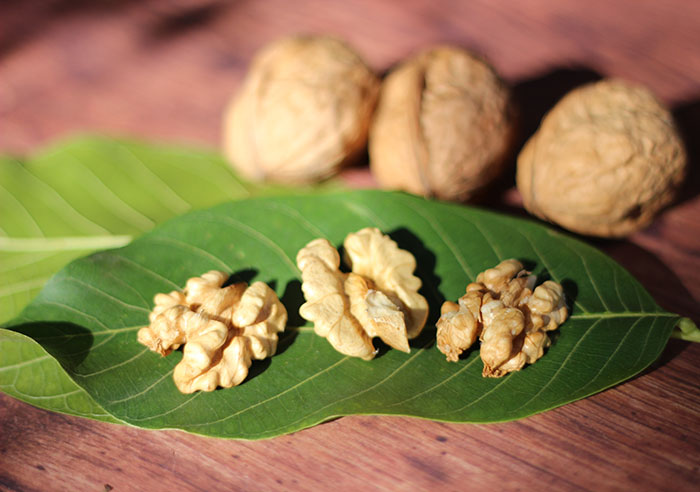
Omega-3 Alpha-Linolenic Acid or ALA
The common walnut contains a large amount of oil content, most of which is in the form of the essential omega fatty acids known as omega-6 and omega-3. Compared to other nut and seed selections, walnuts are actually the highest in overall polyunsaturated fats, which make up about 70% of their total fat content.
The most significant part about walnuts is that these polyunsaturated fats are in an ideal 4:1 ratio of omega-6 to omega-3. This is, relatively speaking, far greater than other varieties, with the exception of flax, hemp seed and chia which have a higher omega-3 fat content.
However, it is important to clarify that walnuts are a source of ALA omega-3 or alpha-linolenic acid, which is primarily found in higher quantities in plant-based foods.
Walnuts are Not a direct source of EPA or DHA omega-3 long-chain fats. These are serious nutrients needed for proper neurological functioning. These types are especially found in fish, seafood or in concentrated fish oil, krill oil and algae oil supplements.
While some people can indeed convert ALA omega-3 into EPA and DHA, this process is not considered reliable for most individuals. (*)
ALA omega-3 fat sources are nonetheless considered one of the good fats and are a nutritious part of a health-enhancing diet.
The typical recommendation of ALA omega-3 for adults is 2 g/day. This amount can of course vary on age, diet, health conditions and gender.
ALA consumed through dietary sources has been shown to offer neuroprotective support (*) and helps to promote an anti-inflammatory influence, counteracting the pro-inflammatory effects of excess LA omega-6 fats which are far more common in the average diet.
One Ounce of Walnuts Contains:
- Total Fat - 18.3 g
- Saturated Fat - 1.7 g
- Monounsaturated Fat - 2.5 g
- Polyunsaturated Fat - 13.2 g
- Omega-3 fatty acids - 2542 mg
- Omega-6 fatty acids - 10666 mg
It is important to be aware that toasting or roasting walnuts can significantly reduce nutrient quality as well as oxidize the polyunsaturated fats which are highly heat sensitive and susceptible to rancidity. We recommend, for highest health benefits of walnuts, consuming them in their raw unheated state.
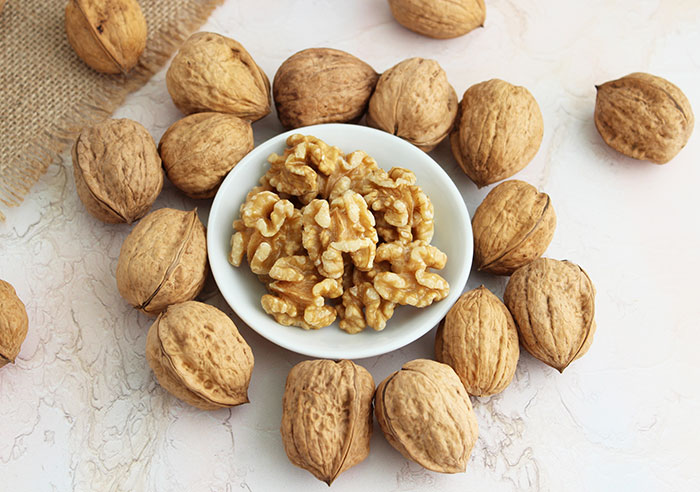
Walnuts Contain Melatonin and Folate
Another aspect about walnuts that is claimed to make them a "brain-nourishing" food, is their higher amounts of melatonin and folate content.
Melatonin is often referred to as the "sleep hormone" because it helps to regulate night/day sleep-wake cycles which can be potentially helpful for those with sleep disorders and the negative impacts such conditions can have on mental functions.
Eating walnuts in some research has been identified to provide an "increase in blood melatonin concentrations" and provide an antioxidative effect. (*)
Additionally, raw English walnut kernels contain good amounts of folate (folic acid) at approximately 27.4 mcg per one ounce serving or about 58 mcg of chopped raw walnuts per 1/2 cup serving.
Folate is a B vitamin that can offer cognitive and neurological support, chiefly by providing an anti-inflammatory influence as well as encouraging a decrease in homocysteine levels. Some evidence has identified that individuals with depression showed lower levels of serum folate, but further study is warranted. (*)
Adequate folic acid intake is also extremely important during periods of rapid growth such as infancy, adolescence and pregnancy. Folate is also found in high amounts in sunflower seeds, hemp seeds, hazel nuts and sesame seeds.
In Chinese and Ayurvedic Systems
In Chinese herbalism walnut as a digested food is believed to enter the Kidney, Lung and Large Intestine channels. They are thought to offer nourishment to kidney essence, which is good for normal brain development, sexual libido and fertility.
This correlates with some research that shows improved semen quality in healthy young men consuming 75 grams (about 2.5 ounces) of walnuts a day as part of a Western-style diet.
Walnuts as well as chestnuts are in fact the top two recommended nuts for building kidney Yin.
In Ayurveda, they sometimes go by their hindi name akhrot, there sweet, warming and fatty qualities are considered good for Vatas, while their slight astringency is also beneficial for Kapha constitutions.
Walnuts are High in Antioxidants
Raw walnuts are known to be rich sources of polyphenols which provide antioxidant activity and in some research were identified as one of the highest in lipoprotein-bound antioxidants than any other nut variety.
Supplementing the diet with a small amount of walnuts can be a good way to nutritionally increase these healthy compounds.
The polyphenolic substances like the tannins and catechin are found mostly in the astringent paper-like skin of the nut itself.
In a 2017 review published in the journal Critical Reviews in Food Science and Nutrition, it was stated that one of the main polyphenols in walnut kernels is pedunculagin, an ellagitannin which is further hydrolyzed to produce ellagic acid.
Ellagitannins can contribute to the walnut's slightly bitter taste and are shown to promote antioxidative and anti-inflammatory actions. (*)
These components can also add to the benefits of walnuts and their potential influence on neurological functions and inflammation-related cognitive disorders. (*)
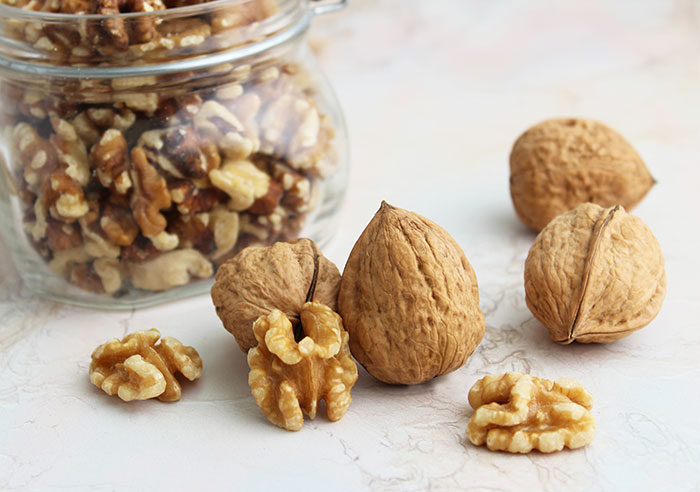
Walnut Supplementation May Provide Cardiovascular Support
Both the ALA omega-3 fats and antioxidant content found in the common walnut are shown to positively influence the cardiovascular system.
In some research dietary supplementation has been shown to be helpful in improving triglyceride levels or "blood lipid profiles" without unfavorable impacts to body weight or blood pressure.
Raw nuts, like walnuts, are part of the heart-healthy Mediterranean diet and consuming them in moderation can be an easy way to provide nutritional fortification.
Do Walnuts Contribute to Weight Gain?
Though walnuts are considered a high-fat calorie-rich food source, they don't necessarily make you gain excess weight. The idea that fatty foods make you fat is, to a large degree, being falsely-evidenced by those adhering to the now popular ketogenic diet.
In some scientific findings, a walnut-enriched diet was found to promote weight loss as well as encourage "favorable effects on LDL-C ["the bad cholesterol"] and systolic blood pressure." (*)
While they can be a good addition to an overall healthy diet or ketogenic protocol, be aware that walnuts, when eaten in excess, can be potentially too acidic and mucus forming.
Generally, an average recommended serving size is about one ounce or 28 grams, roughly about 10 walnut halves. Sometimes a lesser amount, between 4-6 halves may even be more appropriate and can offer a good appetite satisfying snack between meals.
When you think about it, if we naturally had to crack open walnuts straight from the tree, we would usually limit intake to a much smaller quantity. It's only our modern-day access to shelled bulk walnuts that may make us more likely to over-consume them.
English Walnut Nutrition Profile
Vitamin E
(One Ounce of Walnuts)
- 0.2 mg Alpha Tocopherol
- 5.8 mg Gamma Tocopherol
- 0.5 mg Delta Tocopherol
As far as protein content, English walnuts are about mid-range when compared to other nuts and seeds, with one ounce averaging about 4.3g, or 9% of the Daily Value (based on an adult 2000 calorie diet). Generally, a one ounce or 28 grams of walnuts is the equivalent to approximately 10 walnut halves.
As we mentioned they are the highest in overall polyunsaturated fat and about 4th on the list of ALA omega-3 fats after hemp seed, flax and chia.
Walnuts are often claimed to be a good source of the antioxidant vitamin E. However, they are not particularly high in alpha-tocopherol, but rather gamma-tocopherol (γ-tocopherol). This is the most common form of vitamin E found in diets.
According to USDA food composition data one ounce of raw English walnuts are composed of the following vitamins and minerals.
MINERALS
- Manganese - 1.0mg, 48%
- Copper - 0.4mg, 22%
- Magnesium - 44.2mg, 11%
- Phosphorus - 96.9mg, 10%
- Zinc - 0.9mg, 6%
- Iron - 0.8mg, 5%
- Potassium - 123mg, 4%
- Calcium - 27.4mg, 3%
- Selenium - 1.4mcg, 2%
- Sodium - 0.6mg, 0%
VITAMINS
- Vitamin B6 - 0.2mg, 8%
- Folate - 27.4mcg, 7%
- Thiamin - 0.1mg, 6%
- Riboflavin - 0.043mg, 3%
- Niacin - 0.3mg, 2%
- Pantothenic Acid - 0.2mg, 2%
- Vitamin E (α-Tocopherol) - 0.2mg, 1%
- Vitamin K - 0.8mcg, 1%
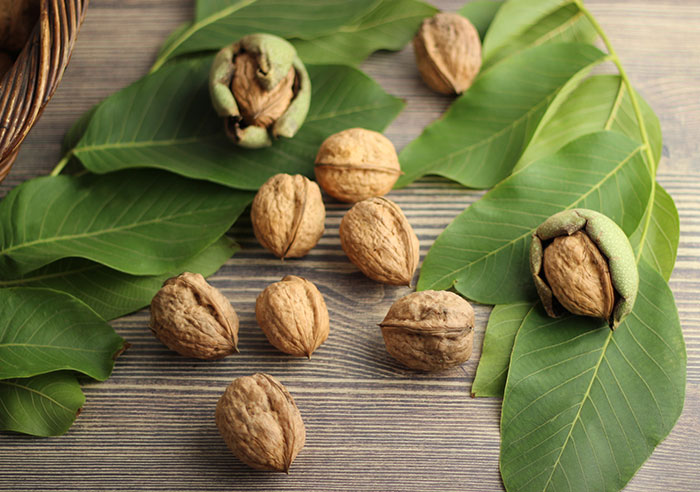
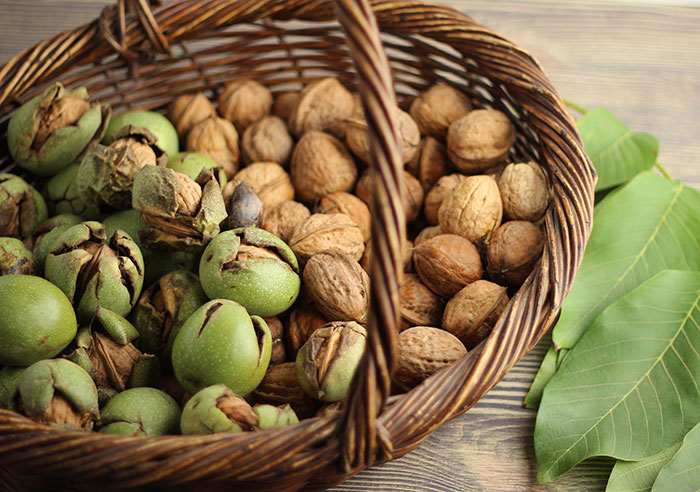
How to Use
Again, the kinds of walnuts we promote consuming are raw unsalted selections, preferably organic if available. These are types that have been minimally processed straight from the tree and have not undergone roasting or toasting methods which are frequently a common practice.
Generally speaking, when it comes to nuts and seeds it is best not to over-consume them. Usually 4-6 walnut halves or no more than a handful (about 10 walnuts halves or one ounce) is a good serving size. This small amount as a mid-day snack or in salads can also provide a feeling of fullness and helps to satisfy the appetite.
When purchasing walnuts, they should be firm and crunchy, not soft, shriveled and/or rancid-smelling.
Visit our nut and seed list for a break down of nutrition data of other varieties.
Because of their high omega fat content and susceptibility to
rancidity, it is best to keep shelled walnuts in the fridge or freezer
to preserve nutrients. Unshelled walnuts are also an option and can be
kept in a cool dark pantry location and will last for many months
preserved within their hard outer shell.
While walnuts do have
some phytates present they are lower than other nuts and seeds because
of their higher fat content. Some people, however, may still prefer to soak them
in water for a period of time, strain and dehydrate to reduce these
potential digestive inhibitors.
You can also spice or sweeten them before dehydration to make a crunchy tasty snack-type food.
We enjoy wild harvesting our own or purchasing them from local suppliers. Farmers markets can be great sources, if you happen to live in a walnut conducive climate zone.
Precautions:
A high intake of walnuts can promote acidic conditions and cause an increase in mucus. Of course, walnuts should be avoided by those with tree nut allergies. Consult your healthcare provider or nutritionist before adding walnuts to your diet if pregnant, nursing, taking prescribed medications or if you have a serious medical condition.
Shop Related Products (About Affiliates & Amazon Associate Paid Links)
Affiliate Disclaimer: This section contains affiliate product links. If you make a purchase through our recommended links, we receive a small commission at no additional cost to you. Thanks for the support.
